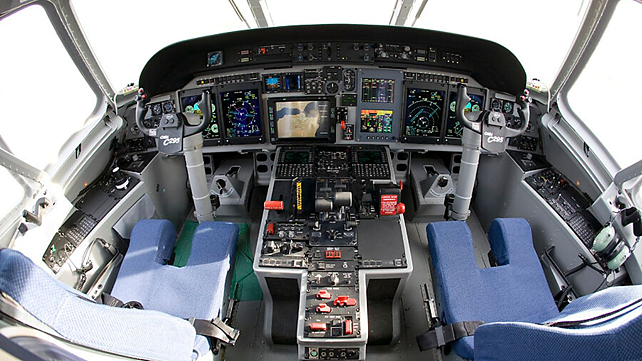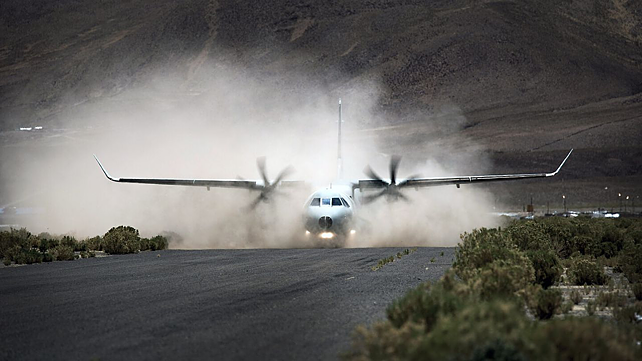
The establishment of a new military aircraft production facility in Vadodara, Gujarat, is a landmark moment for India’s defence private sector.
Prime Minister Narendra Modi laid the foundation stone for the C295 MW aircraft manufacturing facility in Vadodara, Gujarat, which will further bolster the State’s Aerospace & Defence (A&D) ecosystem. Speaking at the event, the Prime Minister noted that the investment in the aerospace sector, post 2014, grew five folds what was invested from 2000 to 2014. “We aim to scale our defence manufacturing beyond $25 billion by 2025. Our defence exports will also exceed $5 billion,” he added.
N Chandrasekaran, Chairman, Tata Sons, said, “I’m confident that this project will propel India into the next generation of advanced manufacturing. It’ll build a diverse & very highly sophisticated skills ecosystem, supplier base, and more importantly, give tremendous high-tech opportunities to young entrepreneurs & students. This project was conceived ten years ago by Ratan Tata and he led this whole concept, built a relationship with Airbus and forged a partnership. I must thank him for his visionary leadership by leading from the front on this initiative.”
According to the Ministry of Defence (MoD), “The project offers a unique opportunity for the Indian private sector to enter into technology intensive and highly competitive aviation industry. It will augment domestic aviation manufacturing resulting in reduced import dependence and expected increase in exports.”
A Tata Consortium comprised of Tata Advanced Systems Limited (TASL) and Tata Consultancy Services (TCS) is the Indian aircraft contractor for the C295 MW programme. TASL is the consortium leader, and at least 40 C295 MW aircraft are slated to be built in India for the Indian Air Force (IAF).
More than 125 in-country Micro, Small & Medium Enterprises (MSME) suppliers spread over seven States have been identified by the Tata Consortium to participate in the INR 21,935 crore project. The Tata Group began its aviation foray in earnest when it set up Tata Advanced Systems Ltd (TASL) in 2007 as its strategic entity in the A&D industry and is the first Indian private sector firm to assemble a military transport aircraft.
Currently, the only other large defence manufacturing facility in Gujarat is L&T’s Hazira campus (A M Naik Heavy Engineering Complex), located near Surat. This modern, coastal multi-facility campus encompasses a Modular Fabrication Facility, Heavy Engineering, Defence & Shipbuilding, and Power equipment manufacturing facilities. The Hazira complex also accommodates L&T’s Armoured Systems Complex (ASC). The 50-acre, green-field state-of-the-art facility was created to manufacture, integrate and test advanced military armoured platforms such as Self-propelled Howitzers, Air Defence Systems, Infantry Combat Vehicles, Future-ready Combat Vehicles and Battle Tanks. Hundred K9 Vajra-T 155 mm 52 calibre Tracked Self Propelled Howitzers were successfully delivered to the Indian Army well ahead of contractual deliveries.
Done Deal
The MoD contracted Airbus Defence and Space, Spain, in September 2021 to supply 56 C295 MW transport aircraft for the IAF. The new aircraft will replace the IAF’s sixties-era HS-748 Avro aircraft, which were manufactured under license by Hindustan Aeronautics Limited (HAL) at Kanpur. The Acceptance of Necessity (AoN), the formal acceptance from the MoD to proceed with a procurement programme, was given in 2012, starting the search for an HS-748 replacement. Airbus Defence and Space ended up as the sole bidder to the MoD’s Request for Proposal (RFP) issued in 2013, and the IAF evaluated the C295 during Field Evaluation Trials in India, which were completed in 2016. The Indian C295 MW is a variant of the standard C295W, which has been on sale since late 2014.

Made In India
As per present timelines, the IAF will receive the first 16 fly-away aircraft from Airbus Defence between September 2023 and August 2025. The delivery of the first C295 MW aircraft assembled in India is slated to begin in September 2026, and the last of 40 aircraft is to be delivered in 2031. This equates to a production rate of eight aircraft per year. This is the first instance of an OEM partnering with a private sector entity (Tata Consortium) to manufacture a military aircraft in India and brought to an end HAL’s monopoly in military aircraft manufacture in India. The Tata Consortium will need to establish specialised infrastructure in hangars, buildings, aprons and taxiways. The aircraft will be tested as an integrated system and then be flight tested and delivered through a delivery centre established at the facility.
As per information released by the MoD, the C295 MW aircraft programme is slated to generate more than 42.5 lakh man-hours of work within the Indian A&D sector. The programme will lead to the creation of 600 highly skilled jobs (directly), over 3,000 indirect jobs and an additional 3,000 medium-skill employment opportunities. Nearly 240 engineers will be trained at Airbus’s facility in Spain.
According to the MoD, 96% of the total man-hour work per aircraft that Airbus employs at its manufacturing facility in Spain will be undertaken in India by the TATA Consortium. Over 13,400 detail parts, 4,600 sub-assemblies and all the seven major component assemblies required for the C295 MW will be manufactured in India. The tools, jigs and testers required for the programme will also be made in India. Airbus Defence & Space will supply aircraft systems such as engines, landing gear, avionics, EW suite etc, for integration by the Tata Consortium.
Airbus Defence will also contract its Indian Offset Partners by directly purchasing eligible products and services to discharge its offset obligations, which will further aid in the growth of the indigenous A&D industry. BEL and Bharat Dynamics Limited will supply an indigenously developed Electronic Warfare (EW) system that will be fitted on all 56 aircraft. The Tata Consortium will also create a ‘D’ Level servicing facility for C295 MW aircraft Maintenance, Repair and Overhaul (MRO). This facility could later emerge as a regional MRO hub for other C295 variants.

Modern Airlifter
The C295 MW comes standard with winglets, which provide improved take-off performance at hot and high airfields and allow the aircraft to cruise at higher altitudes, especially with higher payloads. The winglets also aid in reducing fuel consumption, which is lower by 3-6% compared to older aircraft variants. The aircraft can carry up to nine tonnes of payload. They can be rapidly reconfigured to perform a wide range of missions such as personnel, troop and bulky/palletised cargo transportation to casualty evacuation, communication and logistic duties, search and rescue, surveillance and control, homeland security, or certified air-dropping.
The aircraft is powered by two Pratt & Whitney Canada PW127G turboprop engines, which allow the aircraft to cruise at a maximum cruise speed of 480 km/h at altitudes of up to 30,000 feet. It can also stay in the air for 13 hours. The C295 MW has a long pressurised cabin of 12.7 m in length, allowing it to carry up to 71 personnel. It can also carry much more palletised cargo (up to five 88-inch X 108-inch standard HCU-6E pallets) with direct off-loading through its rear ramp door.
According to Airbus, the C295’s STOL capability combined with a strong landing gear allows it to operate in the most austere locations with the worst conditions for take-off and landings. The tactical military transport aircraft’s light footprint allows it to operate from short (about 670m) or soft (CBR 2) unprepared airstrips. It has outstanding low-level flight characteristics for tactical missions and can fly at speeds as slow as 200 km/hr. Airbus states that C295W operators have successfully utilised the aircraft over long deployments, some exceeding two years, with aircraft racking up 100 flight hours per month in remote areas such as Chad, Iraq and Afghanistan.

The induction of C295 MW will be a significant step towards the modernisation of the IAF’s transport fleet and will provide a major boost to its tactical airlift capability, especially in the Northern and North-Eastern sectors and Andaman & Nicobar Islands.